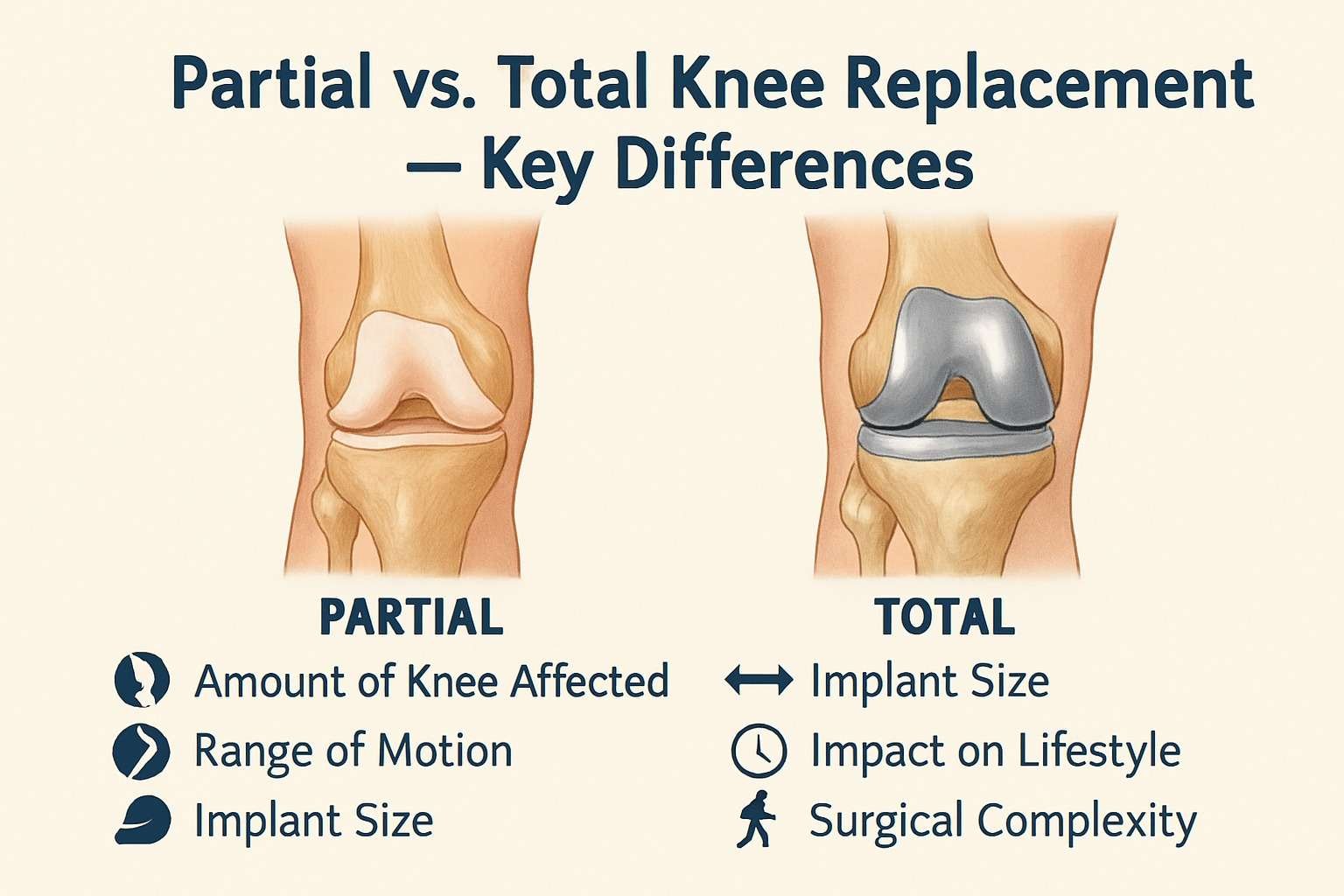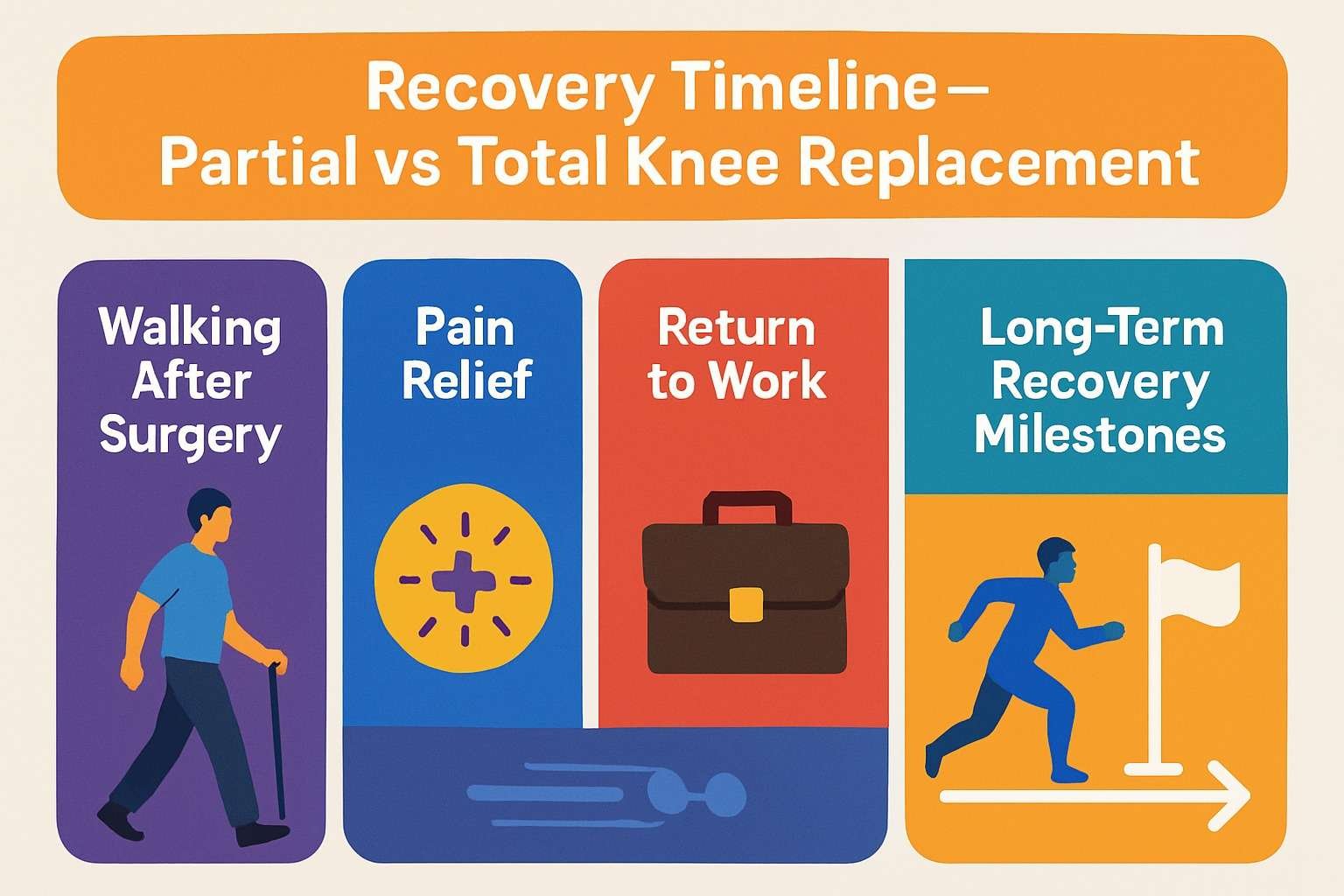

Knee pain can significantly affect daily movement, confidence, and long-term mobility. As technology advances, many patients now look toward modern surgical options that offer faster recovery and better precision. One such breakthrough is Robotic Partial Knee Replacement: When It’s Better Than Total Replacement, a technique that has transformed how knee surgeries are performed. This blog helps patients with early arthritis, chronic knee pain, active lifestyles, or age-related wear understand when a partial robotic approach may be ideal.
To explore treatment options locally, visit Arora Clinic’s detailed page on Knee Replacement Surgery in Thane
Partial knee replacement means only the damaged portion of the knee—usually one of the three compartments—is resurfaced. Unlike total replacement, the healthy bone, cartilage, and ligaments are preserved. With robotic assistance, the surgeon uses 3D mapping and digital planning to create a personalized approach. This enhances accuracy and ensures that the implant fits the patient’s natural knee anatomy more closely. Robotic mapping allows fine-tuning every millimeter for superior precision. This also highlights the Advantages of robotic knee replacement offering more accuracy and control compared to traditional methods.
The process begins with advanced 3D imaging, using CT scans or digital mapping to help the surgeon understand knee alignment and joint condition. Based on this data, a personalized surgical plan is created to match the patient’s anatomy accurately. During the procedure, the robotic arm guides the surgeon, ensuring controlled bone preparation and precise implant placement. These factors explain Why choose robotic knee replacement surgery as it promotes consistent results and minimizes room for error.
Patients with isolated damage in one compartment—typically medial, lateral, or patellofemoral—benefit most from this surgery. Those with early to moderate arthritis, localized cartilage wear, or consistent knee pain in a single area are strong candidates. This approach also suits active adults who want to maintain flexibility and individuals with strong ligaments. One of the key reasons patients opt for this technique is How robotic knee surgery helps recovery thanks to its minimally invasive nature.

Partial replacement resurfaces only the damaged compartment, while total replacement covers the entire knee joint.
Partial replacement generally offers better natural movement and knee bending.
The implant used in partial replacement is smaller and preserves more healthy structures.
Partial replacement allows quicker recovery due to minimal tissue disruption.
Patients can often return to normal activities sooner, with improved agility.
With robotic assistance, even a technically demanding partial replacement becomes highly precise.
This procedure is ideal when knee damage is limited to a single compartment and the patient wants faster recovery and natural knee preservation. Patients with minimal cartilage wear, lower-grade arthritis, or those requiring high precision such as athletes—benefit greatly. These scenarios align closely with What are the benefits of robotic knee replacement surgery such as improved motion, reduced pain, and quicker return to daily activities.
Minimized cuts reduce blood loss and speed healing.
Healthy ligaments and cartilage remain untouched, promoting natural motion.
Most patients walk the same day or within 24 hours.
Preserving ligaments ensures better flexibility and proprioception.
Less trauma to surrounding tissues results in a more comfortable recovery.
Precision placement improves implant stability and lifespan.
Robotic navigation ensures accuracy beyond manual techniques.
This advanced technique also highlights the benefits of robotic knee surgery for patients who want predictable outcomes.
Robotic systems provide millimeter-level accuracy, reducing the chances of misalignment or implant imbalance. Real-time adjustments during surgery help the surgeon adapt to soft-tissue conditions instantly. Personalized planning ensures the implant fits perfectly according to the patient’s anatomy, while reduced human error leads to safer, more successful outcomes. This technology showcases the advantages of robot-assisted knee replacement and the growing trust in robotics within orthopedics.
Some patients are not suitable for partial replacement. These include those with advanced arthritis affecting multiple compartments, severe knee deformity, or weak ligaments. Chronic long-term knee issues or severely restricted mobility may also require full replacement. In such cases, the robotic total knee replacement advantages offer remarkable precision and long-term relief.

Partial replacement patients often walk within hours; total replacement may require more gradual progress.
Partial replacement reduces pain sooner due to less tissue disruption.
Many partial replacement patients resume work faster, depending on job type.
Low-impact activities are generally allowed earlier in partial replacement cases.
Partial replacement maintains more natural motion with fewer long-term restrictions.
A consultation with a qualified orthopedic specialist is essential. Diagnosis includes physical examination, lifestyle assessment, and imaging such as X-ray, MRI, or CT scan. Patient preference, activity level, and long-term goals also play a vital role. A knee expert can help determine whether partial or total replacement is best.
You may also explore local specialists using this verified listing for a trusted Knee Replacement Surgeon in Thane
Robotic partial knee replacement is a powerful option for patients with localized knee damage who want faster recovery, less pain, and natural knee movement. It is the preferred solution when only one compartment is affected and accuracy is essential. However, only a knee specialist can determine the right path after proper evaluation. If you’re experiencing knee pain or mobility limitations, consulting an orthopedic expert at Arora Clinic can help you make an informed decision about your treatment options.
Understanding Knee Surgery: When Is It Necessary and What to Expect is crucial for anyone considering this life-changing procedure. From diagnosis to recovery, Dr. Bakul Arora and the team at Arora Clinic provide expert care, ensuring safety, comfort, and lasting results. With advancements like robotic knee replacement technology, patients in Navi Mumbai can look forward to faster healing, improved accuracy, and a pain-free life.
If you’re seeking relief from chronic knee pain, visit Arora Clinic today to schedule a consultation and take the first step toward restored mobility and freedom.
WhatsApp us